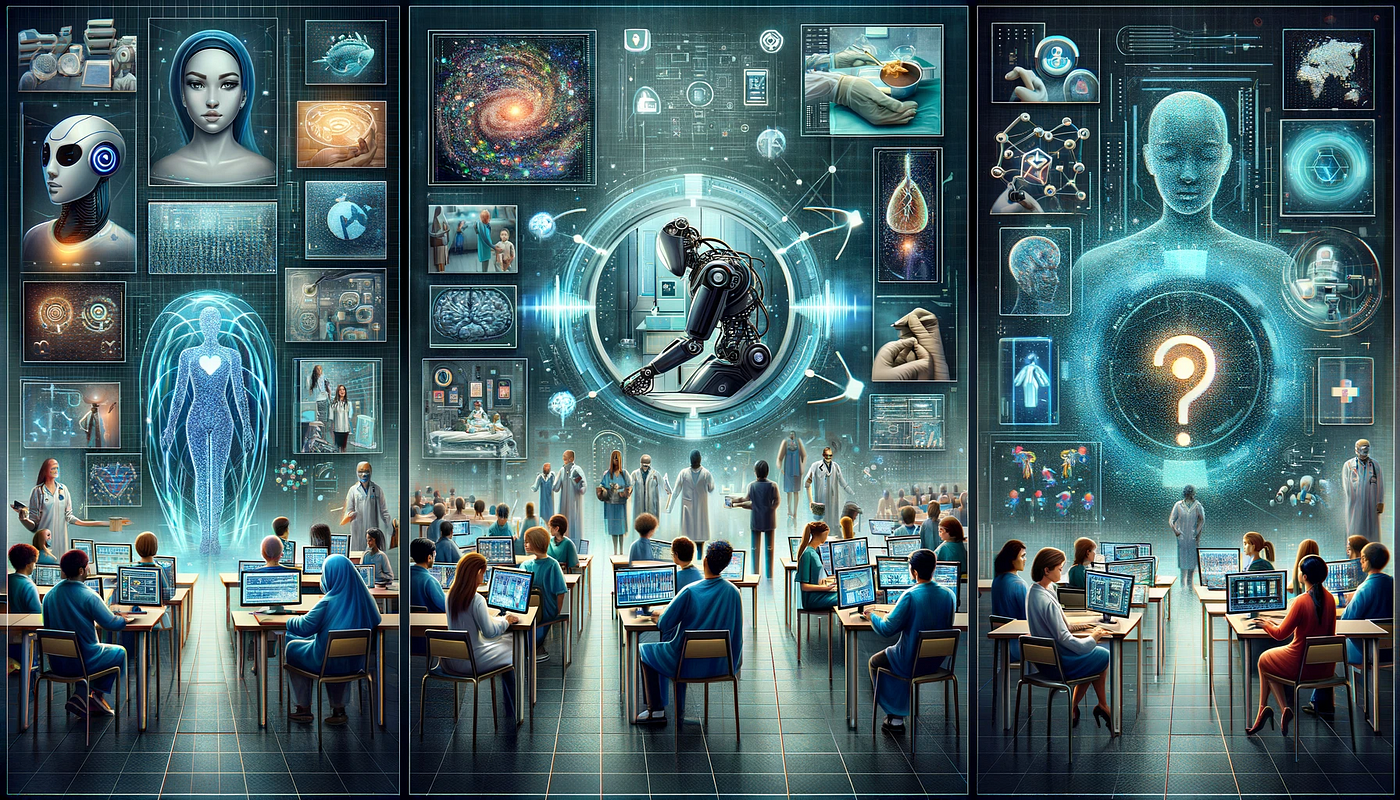
The Rise of Digital Classrooms
Gone are the days of chalkboards and dusty erasers. The advent of technology has ushered in a new era of digital classrooms. Smartboards have replaced traditional blackboards, transforming lessons into interactive experiences. With a tap and a swipe, teachers can bring lessons to life, integrating multimedia elements to engage students in ways unimaginable a few decades ago.
Digital textbooks have also found their place on the educational stage. No more heavy backpacks laden with thick volumes; now, students can carry entire libraries in the palm of their hands. E-books provide convenience and accessibility, allowing learners to explore a vast array of subjects with just a few clicks.
Access to Information and Online Learning
The internet, a colossal repository of knowledge, has become the cornerstone of modern education. Students no longer need to rely solely on textbooks and encyclopedias; a world of information is just a search away. Online platforms offer a plethora of educational resources, from video tutorials to interactive simulations, enriching the learning experience.
The rise of online learning has democratized education, breaking down geographical barriers. Students from different corners of the globe can now connect with top-notch educators and institutions through virtual classrooms. This has opened up educational opportunities for those who might not have access to traditional brick-and-mortar schools.
Personalized Learning Paths
One of the remarkable impacts of technology on education is the ability to tailor learning experiences to individual needs. Adaptive learning software analyzes students' strengths and weaknesses, providing personalized lessons that cater to their unique learning styles. This not only enhances understanding but also fosters a more inclusive educational environment.
Educational apps and games further contribute to personalized learning. These interactive tools make education enjoyable, turning lessons into engaging activities. From mathematics to language acquisition, students can reinforce their skills while having fun, blurring the lines between study and play.
Challenges on the Horizon
Despite the wonders technology has brought to education, it also raises challenges that educators and policymakers must grapple with. The digital divide, the gap between those who have access to technology and those who don't, remains a significant issue. Inequitable distribution of resources may leave some students behind, widening existing disparities in educational outcomes.
Another concern is the potential for technology to replace human interaction. While digital communication has its merits, the importance of face-to-face interaction in the learning process should not be underestimated. Building social skills, empathy, and teamwork are crucial aspects of education that must not be overshadowed by the allure of screens.
Preparing Students for the Future
As we sail further into the digital age, it becomes increasingly important to equip students with the skills they need to navigate the complexities of the future. Technological literacy is no longer a luxury but a necessity. Schools must integrate coding, digital literacy, and critical thinking skills into their curricula to prepare students for a rapidly evolving job market.
Additionally, fostering creativity and adaptability is key. The jobs of tomorrow may not even exist today, and students need to be adept at learning new skills throughout their lives. Technology can play a role in cultivating these qualities, providing tools for creative expression and problem-solving.
Cultivating Lifelong Learning Habits
Technology has given rise to a culture of continuous learning, encouraging individuals to engage in lifelong education. Online platforms offer a plethora of courses, workshops, and tutorials catering to a wide range of interests and skill levels. This democratization of knowledge allows individuals to pursue learning opportunities beyond formal education, fostering a mindset of curiosity and self-improvement.
Moreover, technology has facilitated the creation of Massive Open Online Courses (MOOCs), providing access to high-quality educational content from renowned institutions worldwide. This not only breaks down geographical barriers but also offers a cost-effective alternative for individuals seeking to acquire new skills or deepen their knowledge in specific areas.
Inclusion and Accessibility
Technology has the potential to bridge gaps in educational accessibility. For students with disabilities, assistive technologies such as screen readers, speech-to-text software, and adaptive learning platforms can significantly enhance their learning experience. Digital content can be customized to accommodate various learning styles, ensuring that education is more inclusive and accessible to diverse groups of learners.
Additionally, technology has opened up opportunities for remote learning, benefiting students who may face challenges attending traditional brick-and-mortar schools. This is particularly relevant in situations such as health crises, allowing education to continue even when physical attendance is restricted.
Environmental Impact and Sustainability
The shift to digital classrooms has also contributed to a more sustainable approach to education. Reduced dependence on printed materials has led to a decrease in paper consumption, lowering the environmental footprint of educational institutions. E-books, online assignments, and digital communication methods have become integral components of eco-friendly educational practices.
Furthermore, virtual classrooms and online collaboration tools diminish the need for extensive travel, reducing the carbon footprint associated with commuting to and from educational institutions. Embracing technology in education aligns with broader efforts to promote environmental sustainability and instills eco-conscious values in the younger generation.
Parental Involvement and Communication
Technology has transformed the way educators communicate with parents and guardians. Digital communication platforms, such as emails, messaging apps, and online portals, facilitate real-time updates on a student's progress, upcoming events, and important announcements. This seamless communication enhances parental involvement in a child's education, creating a collaborative partnership between educators and families.
Additionally, parents can actively participate in their child's learning journey through online resources and interactive platforms. This not only strengthens the support system for students but also fosters a sense of community within the school environment.
Economic Opportunities and Entrepreneurship
The integration of technology in education aligns with the demands of the contemporary job market. Students equipped with technological skills are better positioned to navigate the professional landscape and contribute to economic growth. Moreover, technology facilitates the development of entrepreneurial skills, empowering students to explore innovative solutions and turn their ideas into viable ventures.
Online platforms also provide opportunities for skill development in emerging fields, allowing individuals to acquire in-demand skills that are crucial for career advancement. This connectivity to the digital economy prepares students for the dynamic nature of the modern workplace and encourages a mindset of adaptability and resilience.

Conclusion: Balancing the Waves of Change
The impact of technology on education is profound, reshaping the landscape of learning in once unimaginable ways. From digital classrooms to personalized learning, the educational journey has been infused with innovation. However, as we navigate these waters, it is crucial to strike a balance, addressing challenges such as the digital divide and the potential loss of human connection.
In this dynamic educational landscape, the compass points towards a future where technology and tradition coexist harmoniously, ensuring that the benefits of innovation are accessible to all. As we set sail into this brave new world, let us chart a course that empowers learners, fosters creativity, and prepares them to navigate the seas of knowledge with confidence.


You must be logged in to post a comment.